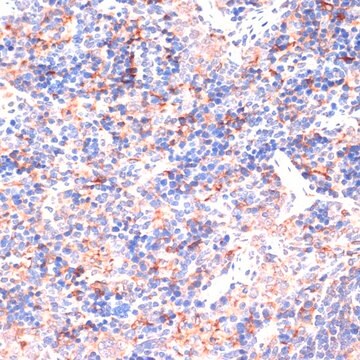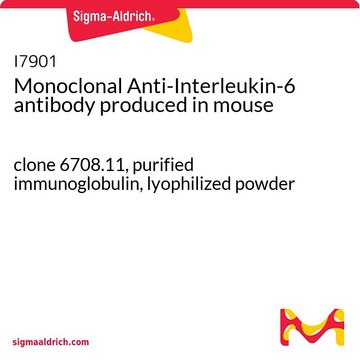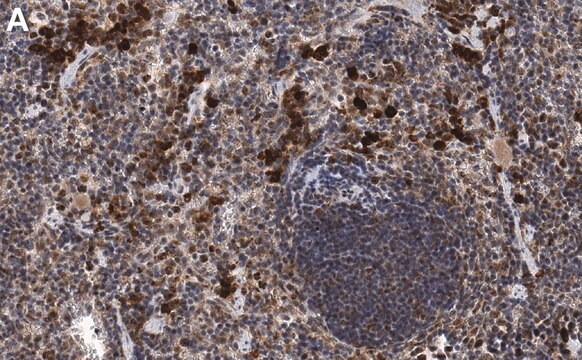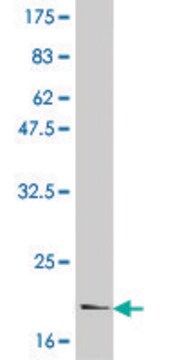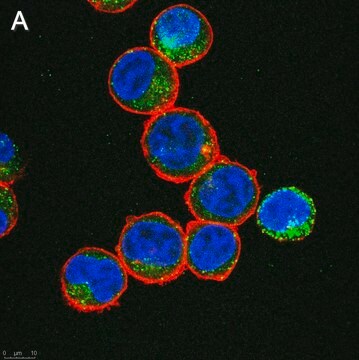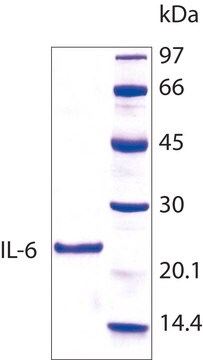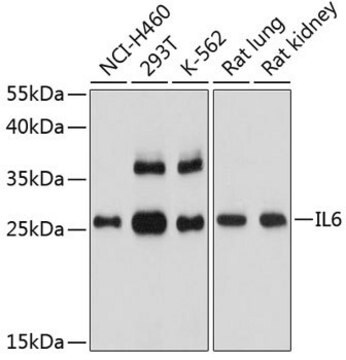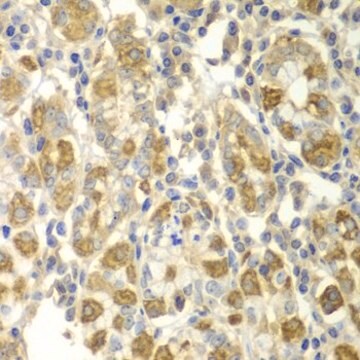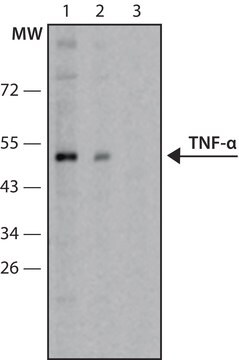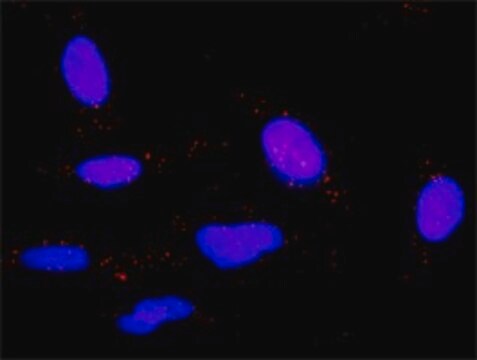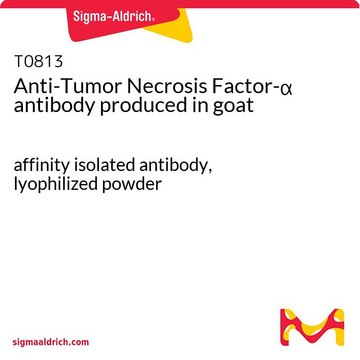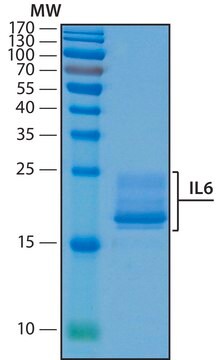I2143
Anti-Interleukin-6 antibody produced in rabbit
IgG fraction of antiserum, buffered aqueous solution
Synonym(s):
Anti-IL-6
Sign Into View Organizational & Contract Pricing
All Photos(1)
About This Item
Recommended Products
biological source
rabbit
Quality Level
conjugate
unconjugated
antibody form
IgG fraction of antiserum
antibody product type
primary antibodies
clone
polyclonal
form
buffered aqueous solution
species reactivity
human
technique(s)
neutralization: suitable using human IL-6 in a T1165 cell proliferation bioassay
radioimmunoassay: suitable
UniProt accession no.
shipped in
dry ice
storage temp.
−20°C
target post-translational modification
unmodified
Gene Information
human ... IL6(3569)
Related Categories
General description
Anti-Interleukin 6 (IL-6) is produced in rabbit using purified human recombinant IL-6 produced in E. coli as the immunogen. Interleukin-6 is a multifunctional protein originally discovered in the media of cells stimulated with double stranded RNA. Interleukin-6 (IL-6) is a cytokine produced by activated T cells, endothelial cells, fibroblasts and activated monocytes or macrophages.
Specificity
The antibody will neutralize the biological activity of human IL-6 in cell culture. The antibody does not cross-react with human IL-1β, TNF-α or mouse IL-6.
Immunogen
Purified human recombinant IL-6 produced in E. coli.
Application
Anti-Interleukin-6 antibody can be used in western blotting and ELISA for studying human IL-6. It can also be used for dot blot immunoassay. Anti-Interleukin-6 antibody can be used for selective neutralization of human IL-6 bioactivity in cell culture. It can also be used in radioimmunoassay (RIA) (diluted 1:60,000).
It may also be used in immunoblotting.
Biochem/physiol Actions
Interleukin 6 (IL-6) acts upon a variety of cells, including fibroblasts, myeloid progenitor cells, T cells, B cells, and hepatocytes. Interleukin 6 (IL-6) also potentiates the proliferative effect of Interleukin 3 (IL-3) on multipotential hematopoietic progenitors.
Interleukin-6 (IL-6) is a cytokine produced by activated T cells, endothelial cells, fibroblasts and activated monocytes or macrophages. It plays a crucial role in regulating the acute phase response as well as responses occurs after injury and infection. It interacts with IL-2 and facilitates in the proliferation of T lymphocytes.
Physical form
Solution, 0.2 μm filtered, in 0.5 mL phosphate buffered saline, pH 7.4.
Disclaimer
Unless otherwise stated in our catalog or other company documentation accompanying the product(s), our products are intended for research use only and are not to be used for any other purpose, which includes but is not limited to, unauthorized commercial uses, in vitro diagnostic uses, ex vivo or in vivo therapeutic uses or any type of consumption or application to humans or animals.
Not finding the right product?
Try our Product Selector Tool.
Storage Class Code
10 - Combustible liquids
WGK
WGK 3
Flash Point(F)
Not applicable
Flash Point(C)
Not applicable
Choose from one of the most recent versions:
Already Own This Product?
Find documentation for the products that you have recently purchased in the Document Library.
Customers Also Viewed
A crosstalk between myeloma cells and marrow stromal cells stimulates production of DKK1 and interleukin-6: A potential role in the development of lytic bone disease and tumor progression in multiple myeloma
Gunn W G, et al.
Stem Cells, 24(4), 986-991 (2006)
Vuong Cat Khanh et al.
Stem cells and development, 29(21), 1382-1394 (2020-09-10)
Cancer metastasis is the leading cause of mortality among breast cancer patients. Type 2 diabetes mellitus (T2DM) has been suggested as a risk factor of breast cancer; however, whether or not T2DM is associated with breast tumor metastasis remains unclear.
Inflammation, obesity, stress and coronary heart disease: is interleukin-6 the link?
Yudkin J S, et al.
Atherosclerosis, 148(2), 209-214 (2000)
Debra J Romberger et al.
American journal of physiology. Lung cellular and molecular physiology, 311(1), L101-L110 (2016-05-18)
Agricultural dust exposure results in significant lung inflammation, and individuals working in concentrated animal feeding operations (CAFOs) are at risk for chronic airway inflammatory diseases. Exposure of bronchial epithelial cells to aqueous extracts of hog CAFO dusts (HDE) leads to
Interleukin-6 and chronic inflammation
Gabay C, et al.
Arthritis Research & Therapy, 8(2), S3-S3 (2006)
Our team of scientists has experience in all areas of research including Life Science, Material Science, Chemical Synthesis, Chromatography, Analytical and many others.
Contact Technical Service